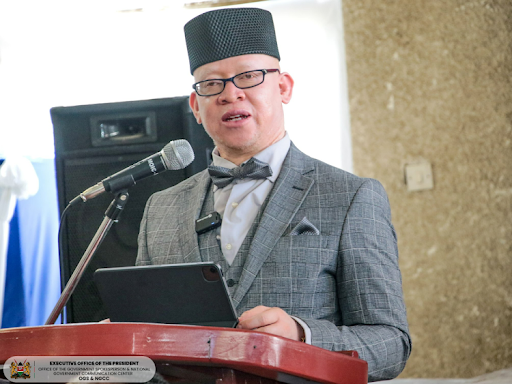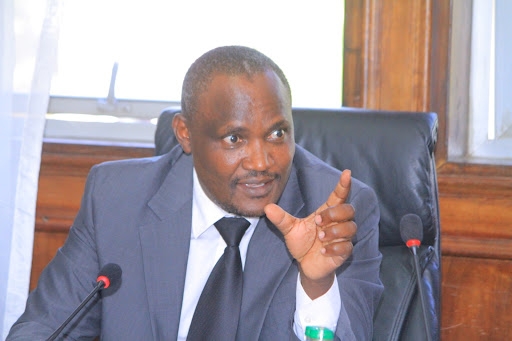
We celebrated Mazingira Day last week to demonstrate commitment to taking care of our planet Earth, as the God-given home for mankind.
That suggestion by Nobel laureate
Wangari Maathai that each one of us plants a number of trees equal to their
age, remains a true mazingira challenge for all of us.
In
the same vein, when one is given a role or responsibility, it’s an opportunity
to serve God and country in the best way one is able, notwithstanding
pre-existing limitations that set the stage for success or failure.
My office was set up following our appointment on October 4, 2023, by presidential order that also included the first batch of ambassadors under the Kenya Kwanza administration.
My deputies and I had been assigned to articulate the government
agenda to the public in a rapidly evolving communication space that is way
ahead of the traditional means of communication.
While it has always been the prerogative of the conveyor of the message to look for an appropriate channel to broadcast his or her message to a wider audience, this role is now shared by literally everyone who has something to say about themselves, especially through social media.
In fact, new media has turned both the boundaries of communication and sovereignty on their heads, as it’s now not only borderless but un-corporate. It’s individual, relational, away from our African ethos of Ubuntu of “I am because we are.”
This, coupled with the very
liberal Kenyan Constitution that lays emphasises individual/human rights as
more ‘real’ than corporate rights; to a large extent, it negates the structural
underpinnings of modern day, traditional media norms.
Within this broad context, Executive Order Number 2 of 2023, released on November 2, placed my office right at the centre of the Executive office of the President, both as an office and an institution.
President William Ruto had given me marching orders
on October 19, 2023, at State House Nairobi to perform all that pertains to the
mandate of the office. That was the same day he launched the Social Health
Authority (SHA) Acts.
Moving a function from a ministry to the presidency wasn’t easy.
We had to set up the Office
of the Government Spokesman from scratch, with no office space, equipment or
staff. It was a herculean task. Building a staff from only three appointments,
with an establishment of only seven, was a huge undertaking.
Refashioning the office to be the real National Government Communications Centre within the presidency has been a journey. It’s been literally flying the plane as you build it.
I had to make sure we got a new structure approved, and this takes a
lot of time in government. In the meantime, as a leader, I had to cobble together
a team to do our bidding, with neither infrastructure nor any orientation.
As of now, we have a wonderful staff of 46, drawn from contract staff, mainstream civil servants, interns and volunteers. Getting them to gel into functionality wasn’t easy, as it mimicked courtship, yet this is an arranged, or a forced marriage of sorts.It has to work.
We had to use our personal media equipment such as cameras, since the procurement process and budgets in government take a long time before they are settled. It should be noted tour office was set up 13 months after the KK government came into power, and in the second quarter of the financial year 2023-24.
In spite of it all, we have been able to revive the weekly press briefings, and have held 74 of them on various matters of public interest, every Thursday at 11am at KICC.
We have also issued some of them from the counties during our projects, publicity tours, or crises, in places such as Wajir, Lamu, Nakuru, Machakos (Konza), Kisumu, Mombasa, Homa Bay, and recently in Kirinyaga, counties.
At the same time, we have had radio and TV conferences involving several media stations in places such as Mombasa and Nakuru, and with the KBC. This is in addition to hundreds of TV and radio interviews that we do weekly.
My office has been
responding to media queries, both local and international, on emerging issues.
We have the daunting task of communicating on behalf of the government during crisis. In fact, government communication is crisis communication in action.
Within one year, my office has had to deal with crises, beginning with the El Nino rains that claimed many lives, and the New University Funding Model. It was closely followed by the March, April, May (MAM) rains, after the Embakasi fire inferno.
Soon, we had to deal with the Gen Z protests for almost two
months from June to the third week of July. This was our most daunting task as
we did more than 80 online media campaigns to counter misinformation and
disinformation. We then moved on to the Endarasha, Adani and the SHA rollout
crises.
We have also endeavoured to speak to the hearts of Kenyans to love and protect their country through two key national values and principals of patriotism and nationhood, under a campaign titled the Uzalendo Initiative. We have held the campaign in several primary and secondary schools to rally young people to this cause.
We have also put in place measures to promote inclusive communication to
ensure government information is user-friendly to Kenyans with disabilities.
Despite the notion that the reading culture has deteriorated in recent times, my office has been pushing for various articles and publications, such as opinions and features in newspapers, magazines and pull-outs.
We have also produced two trackers of THE BETA PLAN, 23 county development reports and three office quarterly reports, plus several other documents.
The written word is primary,
and from this we have developed new ways of content consumption, such as infographics,
animations and most popularly, short videos that have been received very well,
far and wide by the constantly evolving audience in emergent platforms.
We have also learnt that when others speak for you, there is more credibility, and we have thus developed more than 26 weekly narratives to help guide speaking on behalf of the government in mainstream and social media, and in ground activities and formal set-ups.
To complement this, we are also having the beneficiaries of
government programmes tells their own stories, using their voices to speak up
for government. We have also conducted town halls and used spaces such as X for
participatory communication in the spirit of Bottom Up.
As
we finalise our five-year strategic plan, we believe OGS-NGCC has the capacity
to revolutionise communication.
The
genius of both political and government communication is creative repetition!











